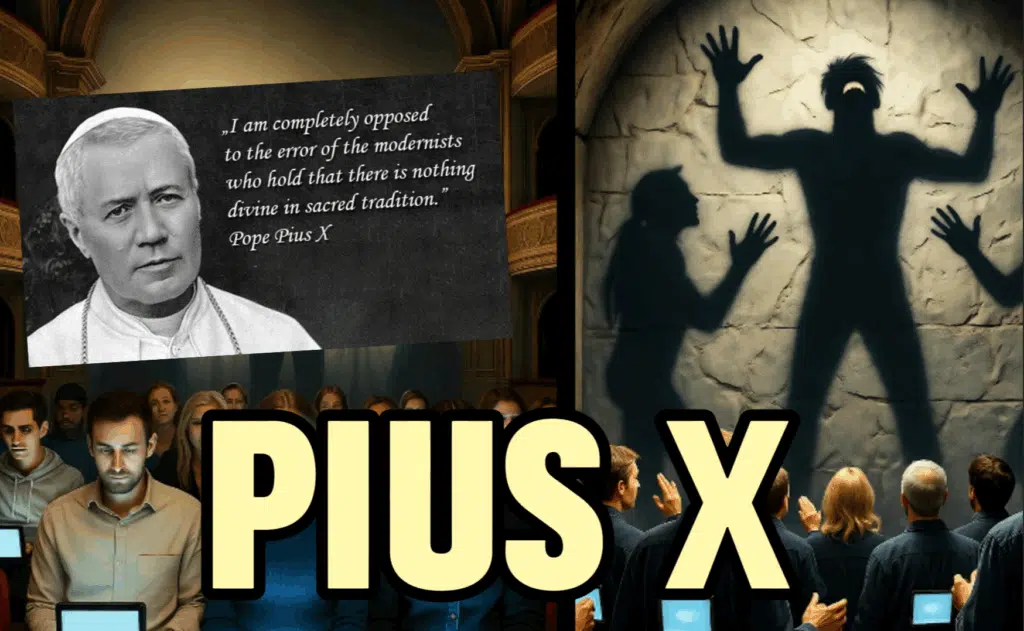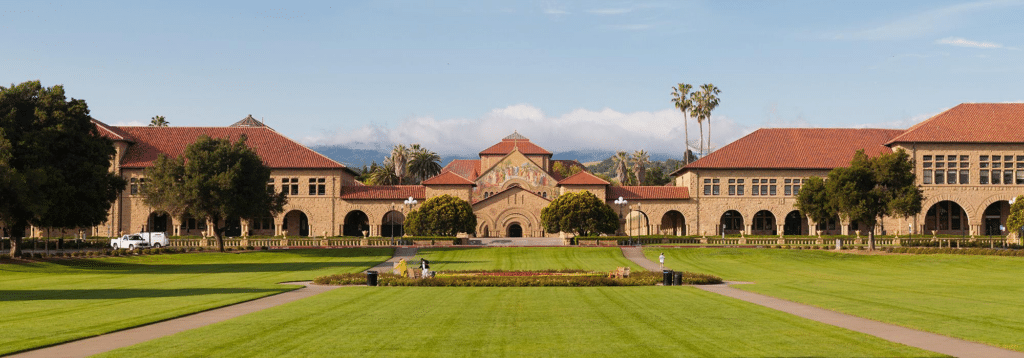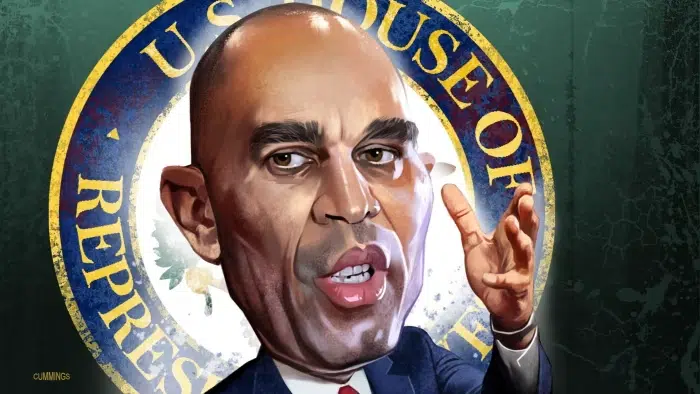
When Pope Pius X Saw the Future: PASCENDI and the Modern Psyop — Part II
A century after Pius X’s reign, what he called “noxious arts” are broadcast at light speed. We scroll through spiritual propaganda dressed in pastel aesthetics, priests turned podcasters, influencers baptizing heresy in self-help. The heresy is aesthetic now–elegant, marketable, shareable.
(Continued from Part I…)
Modernism is malleable; it moves. It spreads by infection, not argument–and certainly not tradition. It manipulates emotion instead of nurturing cautious obedience and intellect. It turns “faith” into content that feels good while it dissolves the mind’s capacity for Truth itself. It is why it is more difficult than it should be to argue from a historically Catholic perspective, because not only are you providing approved Church content as a basis for your work, largely for the sake of teaching Novus Ordo Catholics, but you’re also having to fend off Protestant arguments who use Novus Ordo Catholic content creators’ work against you–and a lot of the time they’re not wrong.
But that’s the point of Pascendi–Pius X warned against Protestant, Modernist thought changing the Church from within.
It is the hallmark of this pernicious rot: destruction through reinterpretation, through sustained algorithmic pressure, through a sweeping and unassailable memetic energy. It is how the digital world recreates reality. Truth is not erased–it is reframed, redefined.
According to whom? According to each person’s experience and feelings, of course. Ever hear the expression “Speak your truth”?
That is not the Christian way.
We are told that meaning evolves, that doctrine develops like software, that God himself updates to remain “relevant.” The irony is that these updates never strengthen faith; they just make the faith more marketable to people who secretly despise it. It’s the same reduction that defines modern society–Christ as influencer, not Redeemer; Church as community brand, not historical, hierarchical, and sacramental; Gospel as plug and political platform, not divine revelation.
It all allows sinners to hide, to never change, to have an excuse to continue their helping hand in destroying souls. Because according to the Modernist religion, everyone is right, in their own way. Truth is no longer objective, but subjected to an onslaught of never-ending, self-referential trash.
According to Pius X, there is no saving the Modernist. For like the Marranos who have given their false allegiance throughout history only to destroy Christianity from within, Modernists simply nod and say yes to correction–before returning to their vomit when alone:
Once indeed We had hopes of recalling them to a better sense, and to this end we first of all showed them kindness as Our children, then we treated them with severity, and at last We have had recourse, though with great reluctance, to public reproof. But you know, Venerable Brethren, how fruitless has been Our action. They bowed their head for a moment, but it was soon uplifted more arrogantly than ever. If it were a matter which concerned them alone, We might perhaps have overlooked it: but the security of the Catholic name is at stake. Wherefore, as to maintain it longer would be a crime, We must now break silence, in order to expose before the whole Church in their true colours those men who have assumed this bad disguise.
Catholic name at stake? Indeed, I don’t think I could number the people, students and colleagues alike, who hate the infiltrated Church and have no idea what our ancient teaching actually is. I am working with several people as we speak on a very personal level to evangelize them back to the Faith, and what they tell me in the way of lies about the Catholic Church is so consistent that there could be only one source for such diabolical deception.
And that voice is one of the two seeds of Genesis 3:15.
Pius X saw the coming psychology of it. All of it. In Modernism the self becomes the measure of all things. Truth no longer descends from Heaven; it bubbles up from the feed. It is self-referential–just like Lucifer.
Once faith ceases to be anchored in the God who is, it becomes prey to the god we invent. Once the sacramental life is replaced by emotional experiences, the path is clear for total control–of thought, of feeling, of consent.
The poison is everywhere: in the curated news cycle, in the political “movements” that turn outrage into obedience, and yes, even in the Church’s own attempt to appear “modern.” Perhaps we do not suffer from a lack of faith so much as a misdirection of faith. Perhaps. People still believe–they just believe the feed. And they believe the feelings that well up inside them created by the orchestrated manipulation of it all.
That includes everything coming out of Rome and pulpits everywhere that is in direct opposition to everything the popes were teaching before.
The cure for all of this remains the same.
The antidote to Modernism, whether in 1907 or 2025, is the traditional sacramental life–historical, hierarchical, incarnational, immune to trends. It is the tether back to Reality with a capital R, the one Pius X fought to preserve when he warned that the poison was already coursing through the Church’s veins.
He saw what was coming. And the evidence we’re seeing with our very own eyes says we’re living it.
The question now is not whether we will be vigilant shepherds or distracted sheep, but whether we still know what flock we belong to. The modern world was built on the premise that man could rewrite God, and Pius X saw the end of that script. What remains is whether we will return to what he fought for–the Faith as it was, which the gates of hell shall not prevail against, not as we’ve remade it to our liking–before the curtain finally falls.



